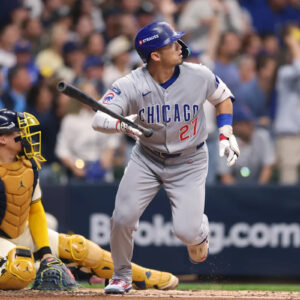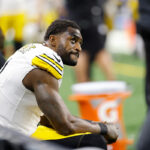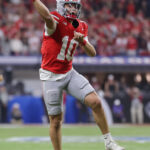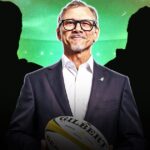Keegan Bradley possesses a singular aspiration as he contemplates the determination — scheduled for disclosure Wednesday morning — concerning whether he will become the initial Ryder Cup playing captain for the United States since Arnold Palmer in 1963.
“I wish he was alive and I could call him,” Bradley expressed, alluding to Palmer, who passed away in 2016. “If I could have one thing, it would be the ability to contact Arnold and seek his guidance, as I believe he would offer some invaluable counsel.”
While Palmer’s recommendations would likely have been insightful and direct, it remains uncertain precisely what the golf legend would impart to Bradley.
It is reasonable to assume Palmer would encourage Bradley to participate. After all, “You must play boldly to win” is among Palmer’s most recognized statements. However, Palmer prioritized victory above all else. Following that line of thinking, he likely would have advised Bradley to pursue whatever course of action he deemed most likely to enhance the United State’s prospects of achieving triumph over Europe.
Palmer, a seven-time major champion, exemplified innovation and a thirst for adventure. In 1976, he established a global record by circumnavigating the planet in a Learjet — a journey lasting 57 hours, 25 minutes, and 42 seconds. He frequently executed daring, risk-inclined shots on the golf course with the sole intention of winning. While this audacious mindset contributed to some heartbreaking defeats, it also enabled Palmer to orchestrate one of the most remarkable periods of success in golf history, simultaneously establishing himself as the game’s premier figure.
His ultimate choice to compete while serving as captain for the 1963 U.S. Ryder Cup team was not motivated by a desire to create history, however. It was a consequence of the circumstances.
While Palmer remained recognized as the world’s preeminent golfer, his dominance was in the process of being challenged by Jack Nicklaus, then a 23-year-old who secured two of his record 18 majors that year after claiming his first major at Palmer’s expense in 1962.
By all accounts, including Nicklaus on the Ryder Cup team would have been an obvious decision for Palmer. Nevertheless, the PGA of America enforced a rule requiring players to maintain membership for a minimum of five years before becoming eligible to compete in the Ryder Cup. Nicklaus, who turned professional late in the 1961 season, did not meet the criteria to represent his country in the biennial competition.
The regulation clearly bothered Palmer, who admitted feeling “deeply frustrated” at being unable to participate in the 1959 Ryder Cup because he — at that time — had not been a member for a sufficient duration. Palmer was compelled to wait an additional two years before participating in the 1961 Ryder Cup, which resulted in a five-point victory for the Americans.
Nicklaus’s absence in 1963 left a considerable void in the U.S. roster. Combined with the fact that the Americans were poised to field a team featuring four Ryder Cup rookies — Tony Lema, Billy Maxwell, Johnny Pott, and Dave Ragan — Palmer felt obligated to assume the dual responsibility of player and captain.
If anyone possessed the ability to fill Nicklaus’s role, it was the 33-year-old Palmer, who had already secured six of his seven major titles by that point. Although Nicklaus would eventually surpass Palmer as the most prolific major winner in golf history, Palmer largely dominated the sport in the 1960s, making it fitting that he etched his name in history by undertaking the dual role.
Under Palmer’s leadership, the Americans achieved a resounding 23-9 victory over Great Britain at the Ryder Cup, marking one of the largest victory margins in history for a U.S. team. Individually, Palmer recorded a 3-1 record in pairs matches and a 1-1 record in singles matches. He triumphed in one of his pairs matches alongside his close friend and 1958 PGA Champion Dow Finsterwald and in the other two with Billy Casper, a three-time major winner who later inflicted one of Palmer’s most agonizing defeats at the 1966 U.S. Open.
Equally significant as Palmer’s performance as a player was his management of the team’s four rookies in his capacity as captain. On the opening day of competition, featuring four morning and four afternoon foursomes, Palmer opted to integrate his rookies into the competition early.
In the morning, he partnered Pott with himself, Ragan with Casper, and Lema with 43-year-old Julius Boros, who had already secured two of his three career major titles. In the first afternoon pairing, Maxwell competed alongside Bob Goalby, who went on to win the 1968 Masters. Ironically, Palmer-Pott was the only one of the four pairings to suffer a defeat. Despite their loss, the U.S. secured 2.5 out of a possible 4 points, setting the stage for their dominant victory.
Palmer ultimately participated in the Ryder Cup six times between 1961 and 1973 and also served as the American team captain in 1975. He amassed a 22-8-2 record in Ryder Cup matches and remains the United States’ all-time leader in match victories to this day. Palmer never experienced defeat in the Ryder Cup, whether as a player or captain, and in 1963, he emerged victorious while fulfilling both roles.
Palmer certainly did not impede the 1963 team by playing while captaining. In reality, his leadership in both roles significantly contributed to the Americans’ convincing win, thereby becoming an integral aspect of his legendary legacy.
“I had a great passion for the Ryder Cup because it was not primarily about playing for financial gain,” Palmer once remarked. “It revolved around competing for something far more significant and personal. I am proud of the impact the Ryder Cup had on me — and the contributions I made to my teams in six Ryder Cup competitions as a player.
“The game elicits the finest qualities in us, and the finest will invariably showcase their abilities at the Ryder Cup.”












